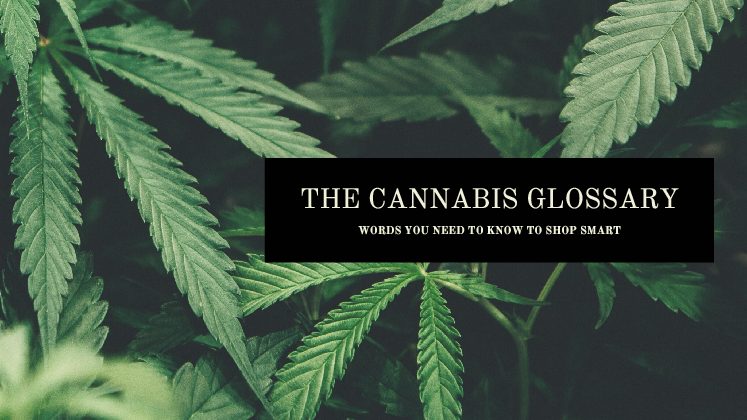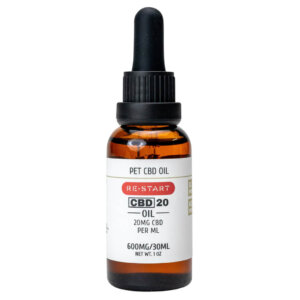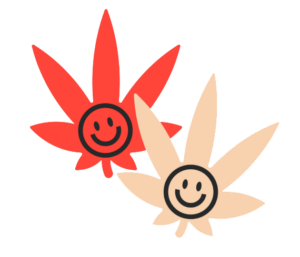Texas Special Session to begins July 21 on SB3 Hemp Regulations.Medical Marijuana Pushing Regulations for our Hemp Market including banning Delta 8. LEARN MORE Dismiss
Skip to contentWant to try Delta 8 THC? Use Code TRYD8 for a free Delta 8 THC Gummy with $50+ Purchase.

Alcohol Extraction: A commonly used method to extract cannabinoids from cannabis plants. In this process, cannabis is first soaked in an alcohol, such as ethanol, to remove the plant material. The alcohol is removed through evaporation.
Bioavailability: How fast CBD enters the bloodstream to take effect. Smoking and vaping are the most immediate because the CBD goes into your lungs, says Rogers. Holding a tincture under the tongue for absorption takes about 10 minutes. A soft gel capsule or gummy ingested orally can take up to several hours because it has to work through your digestive system; your response time can be lengthened by how much food you’ve eaten.
Broad Spectrum: This CBD product contains every element of the cannabis plant (all terpenes and all cannabinoids) except THC.
Cannabinoid: Any of the various naturally occurring, biologically active chemical constituents of hemp or cannabis, including some that possess psychoactive properties, such as tetrahydrocannabinol (THC). The marijuana plant contains more than 100 different cannabinoids.
Cannabinoid 1 (CB1) receptor: CB1 receptors are found on the surface of certain cells, tissues, and organs, and help regulate biological function. CB1 receptors are present in several regions of the brain and spinal cord and, in lesser quantities, in other parts of the body, such as the endocrine glands and the gastrointestinal and urinary tracts. CB1 receptors mediate the effects of cannabinoids on these organs.
Cannabinoid 2 (CB2) receptor: CB2 receptors regulate the biological function of certain cells, tissues, and organs. CB2 receptors are present on white blood cells and in the tonsils, the spleen, immune cells, and neurons. CB2 receptors help mediate the effect of cannabinoids on these organs and cells.
Cannabinoid profile: The concentration of active cannabinoids in a product or medication.
Cannabidiol (CBD): The second most prevalent cannabinoid in cannabis, after tetrahydrocannabinol (THC). Cannabidiol has been shown to calm the movements in people suffering from dystonia, a condition characterized by muscle spasms. Research also suggests that it may be helpful for the treatment of anxiety, movement disorders, and pain.
Cannabigerol (CBG): CBG displays a multitude of potential health benefits including working as a neuroprotectant, having antioxidant properties, aiding with skin ailments as an antibacterial and antifungal agent, appetite stimulation, treatment of gastrointestinal disorders, inflammation reduction, shows promise in fighting cancer, and lowering intraocular pressure, which may benefit glaucoma patients.
Cannabinol (CBN): Cannabinol (CBN) is considered a mildly psychoactive cannabinoid known for its powerful sedative properties. When THC is oxidized, the degradation process converts THC to CBN, which may account for the sedative effect aged cannabis often carries.
CBD Isolate: The most basic and pure form of CBD is an isolate. These contain nothing except pure, isolated CBD. In other words, there are no other cannabinoids, terpenes, or flavonoids – just straight up CBD.
Cannabis: Cannabis refers to a group of three varieties of marijuana plants with psychoactive properties: Cannabis sativa, Cannabis indica, and Cannabis ruderalis. Cannabis contains more than 160 chemical and biologically active components, known as cannabinoids.
Cannabis indica: A strain of cannabis known for higher concentrations of tetrahydrocannabinol (THC). Also called indica, it is known for its sedative effects. Because indica contains higher concentrations of THC, it is popular as a recreational and medicinal drug.
Cannabis sativa: A strain of cannabis known for promoting a cerebral high. Also known as sativa, it has hallucinogenic, hypnotic, sedative, analgesic, and anti-inflammatory effects.
Certificate of Analysis (COA): Any reputable CBD product should have one done by a third-party lab. Find the batch number on your product (usually on the bottom or side), and check the brand’s site for its COA report. Ensure the level of THC is under .3 percent. (Concentrations vary, but most readings hover between .05 and .11, well below .3 percent.) Heavy metals, pesticides, and microbials should also be included; look for “ND” (“not detected”).
CO2 Extraction: CO2 extraction is a great way to get all those amazing cannabinoids separated from the cannabis plant material. It is also the safest (non-toxic) and reusable, environmentally friendly solvent extraction method. No trace amounts of toxins are left behind in the finished product.
Dabs and dabbing: Dabs are concentrated doses of cannabis that are made by extracting tetrahydrocannabinol (THC) or CBD using a solvent like butane; the resulting sticky oils are sometimes referred to as wax. Dabbing is the flash vaporization and inhalation of these concentrates. CBD dabbing is noted for its quick therapeutic effects.
Dosing: The quantity of medicine prescribed at one time. Dosing CBD depends on therapeutic goals, as well as how it is ingested or applied.
Endocannabinoid System: A complex system within the human body that affects many important functions, including how a person moves, feels, and reacts. It includes endocannabinoids, endocannabinoid receptors, and endocannabinoid enzymes.
Edible: Food or candy products infused with marijuana. Edibles must be digested in order to take effect, and as a result, it may take more time to feel their effects.
Entourage Effect: When we combine multiple compounds in their natural state, we don’t end up with the sum of each part; instead, we get a multiplying effect. The different compounds can amplify each other’s chemistry, making the overall plant more effective in addressing unwanted symptoms.
Ethanol Extraction: Ethanol extraction is safe, effective and efficient, combining many of the best aspects of other extraction methods. Ethanol is “generally regarded as safe” for human consumption by the FDA and is used extensively as a food additive or preservative. Ethanol extraction is a great option for commercial production of high-quality oils, distillates, edibles and other cannabis concentrates. Cannabis is soaked in ethanol to extract all the cannabis goodness from the plant. Then the resulting wide spectrum extraction is purged and refined for purity.
Flower: The smokable portion of the female cannabis plant.
Full Spectrum: Refers to a CBD product that contains all elements of the cannabis plant, including up to .3 percent THC.
Hemp: An industrial plant cultivated for its fiber and edible seeds. While hemp is in the same family as the cannabis plant, it does not have psychoactive effects. Commercial items made from hemp fiber include paper, textiles, clothing, biodegradable plastic, and food.
Hempseed oil: Hempseed oil is often referred to as “hemp oil,” and it’s harvested by cold-pressing hemp seeds. Hemp oil is often unrefined. It’s a clear green oil and can have a nutty flavor. It’s different from cannabidiol (CBD) oil, which is an extract of the cannabis plant and utilizes hemp flowers and leaves for its production.
Hybrid: A strain that mixes two varieties of cannabis, indica and sativa.
Indica: Cannabis made from indica plants and used as a psychoactive (mind-altering) drug. It is sometimes characterized as more relaxing in effect than the sativa variety.
Marijuana: The dried leaves and flowers of the cannabis plant. Slang names for marijuana include weed, herb, and pot.
Organic: It’s crucial to look for organic certifications in hemp-derived CBD because hemp absorbs everything in its surrounding soil (including heavy metals or pesticides). “All the sources in your product should have organic certifications on the label or website,” says Nichols. “You can also look for ‘organically grown.'”
Potency: Or strength refers to how strong of a dose you’re getting with any product. IE how many milligrams of CBD per serving.
Psychoactive: When a CBD product contains more than .3 percent of THC (delta-9-tetrahydrocannabinol), it is considered mind-altering. Seeing “psychoactive” (or “THC”) on a label means you might get high. Be careful of how much you’re ingesting.
Salve: A salve is basically a plant-infused blend that is applied directly to the skin, where it is then absorbed. In the case of CBD salves, that infusion is CBD.
Sativa: Cannabis made from sativa plants and used as a psychoactive (mind-altering) drug. It is sometimes characterized as more stimulating in effect than the indica variety.
Strain: A strain refers to the different varieties of cannabis. Some examples include indica, sativa, and hybrid.
Sublingual: The word sublingual means under the tongue. In this method, the user applies CBD oil or cannabis tincture under the tongue.
Terepene: These compounds give cannabis plants their flavor and aroma. Two common ones? “Limonene has an uplifting, citrus flavor, and myrcene is mind-relaxing and has a clove-y scent,” says Grant Rogers, a brand manager at Extract Labs, a hemp-derived CBD company based in Colorado. Think of it like the subtleties of wine, adds Sally Nichols, the president of Bloom Farms CBD, a California-based CBD company. Still, Lee urges consumers to take the mood-altering claims with a grain of salt. “The research we have with terpenes, and most of CBD, does not match the marketing claims,” says Lee, citing the lack of well-controlled studies.
Tincture: A liquid that contains a concentrated herbal extract.
Topical: An oil, salve, lotion, or ointment infused with CBD that can be applied directly to the skin.
THC/Delta 9 tetrahydrocannabinol: Tetrahydrocannabinol (THC) is the primary psychoactive compound in the cannabis plant and widely known for the “high” or “stoned” feeling typically associated with cannabis use. THC can produce a multitude of psychoactive effects, including but not limited to, euphoria, relaxation, introspection, creativity, sedation, sensory alteration, appetite stimulation, focus and energy. Adverse effects may include dry mouth, redness in the eyes, disorientation, dizziness, tachycardia, anxiety and paranoia.
THC also carries a host of medicinal potential that has been studied for a variety of symptoms and conditions. This includes pain relief, anti-inflammation, autoimmune disorders, spasticity, insomnia, nausea, depression and anxiety. THC also shows promise as a possible anti-cancer agent, neuroprotectant and antioxidant.
Vaporizer: A device intended to vaporize substances for inhalation. Vaporizers can be used to heat dried cannabis, cannabis oil, or cannabis wax; they convert the active ingredients into a cannabis-infused aerosol that can be inhaled.
Vaping: Inhaling a vaporized substance generated by an electronic vaporizer.
SIGN UP FOR THE RESTART ROUNDUP:
FOR EXCLUSIVE DISCOUNTS, FREE SAMPLES, CANNABIS ADVOCACY, EDUCATION, & SO MUCH MORE.

2521 Rutland Dr #150A
Austin, TX 78758
(512) 843-7223
Mon-Sat 10am-7pm
Closed Sunday
Curbside Pickup & Delivery

LOCAL DELIVERY • NATIONWIDE DELIVERY
© RESTART LLC SINCE 2018-2024 • TERMS OF SERVICE • STORE POLICIES • PRIVACY POLICY • RETURNS & EXCHANGES
FDA DISCLAIMER:
The statements made regarding these products have not been evaluated by the Food and Drug Administration. The efficacy of these products has not been confirmed by FDA-approved research. These products are not intended to diagnose, treat, cure, or prevent any disease. All information presented here is not meant as a substitute for or alternative to information from health care practitioners. Please consult your health care professional about potential interactions or other possible complications before using any product. The Federal Food, Drug, and Cosmetic Act require this notice.
*LIMIT ONE COUPON PER PURCHASE. COUPON CANNOT BE USED IN CONJUCTION WITH OTHER COUPONS.